7th and final Turkey post: Pamukkale, Ephesus, Izmir, Troy, Canakkale, & back to Istanbul
Ok, I realize no one has time to read this stuff anyway, so I'm gonna try to sum up the last 5 or so days of the trip in one long-ass post. Probably a little ambitious of me. Here's a little taste:
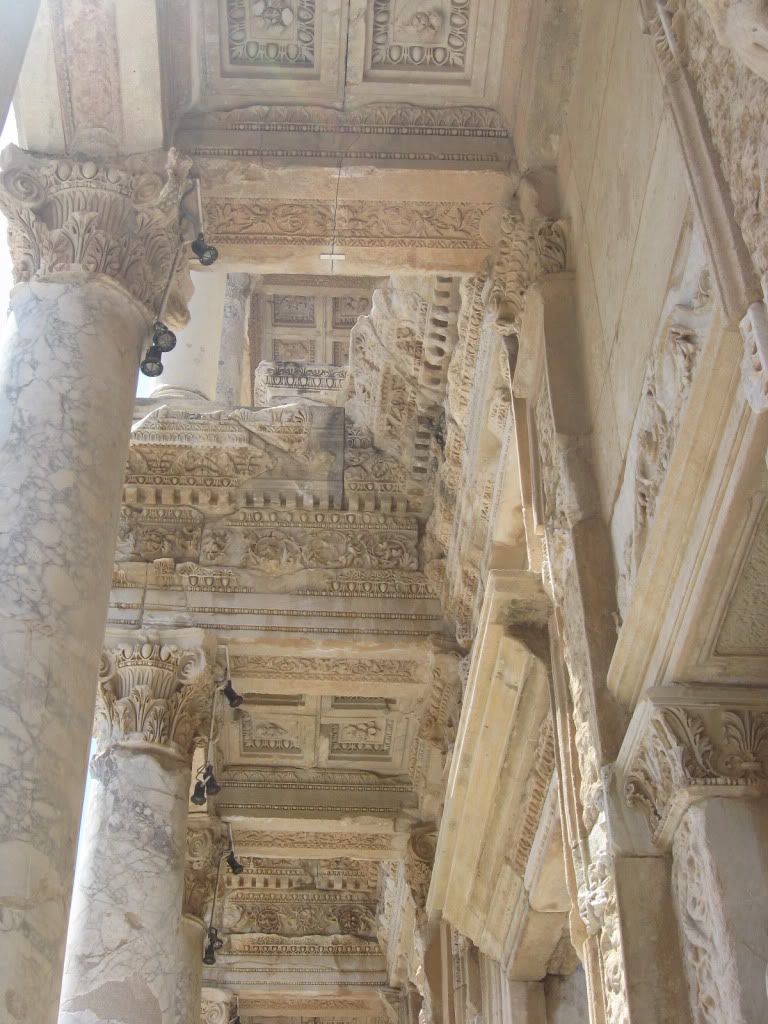
Under the facade of the library at Ephesus (home of Greek philosopher Heraclitus and later the capital of Roman Asia Minor).
Poppies...poppies...

After leaving the lovely-but-expensive resort town of Antalya (and stopping briefly to check out a real poppy field (opium trade, anyone?), we made our way to Pamukkale, which is Turkish for "cotton castle." When you see its landmark attraction, you'll understand why:

This hillside is not covered in ice or snow; in fact, it was crazy hot out that day. This is limestone. In some areas, the limestone formed a series of flat slates that pool with water, which people come to wade and splash around in. Or, if they're young "Russian prostitutes," as Mandra would say, they come in skimpy bathing suits and lay in suggestive poses while their boyfriends take pictures of them, as though they were shooting their own version of the Sports Illustrated swimsuit issue, while people of all ages wait for them to move so they can take pictures of the landscape. LOL
Here are some more shots I managed to get when naked hoochies weren't in the way:






At Pamukkale, you could pay a small fee to take a dip in this pool, which was supposedly a pool (or near a pool) Cleopatra bathed in once-upon-a-time.
Very near Pamukkale (in walking distance; basically at the same stop) were the ruins of Hieropolis, a thermal resort founded in 190 BC and later added-to by the Romans.



It seems even thermal resorts had ampitheatres (at least in Roman times).
Later that afternoon/evening, we enjoyed some relaxation at our hotel, which was also a spa. The hotel grounds were really nice and consisted of several buildings, an outdoor pool, a natural thermal spring, and a restaurant. Here are some shots of the grounds:


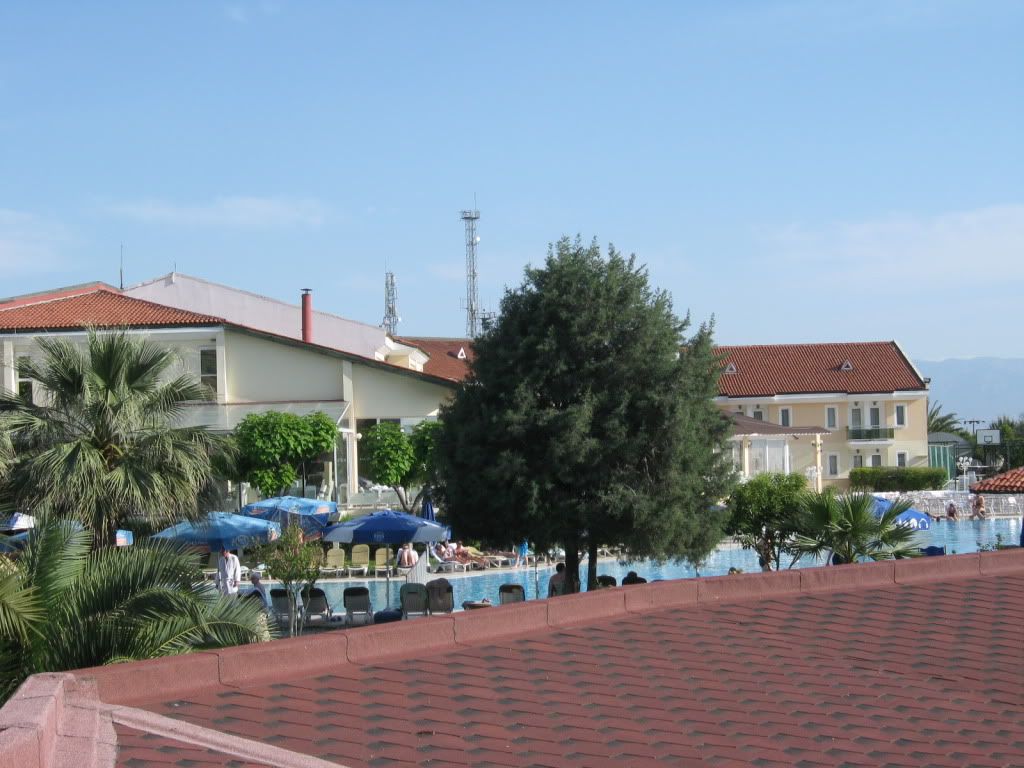
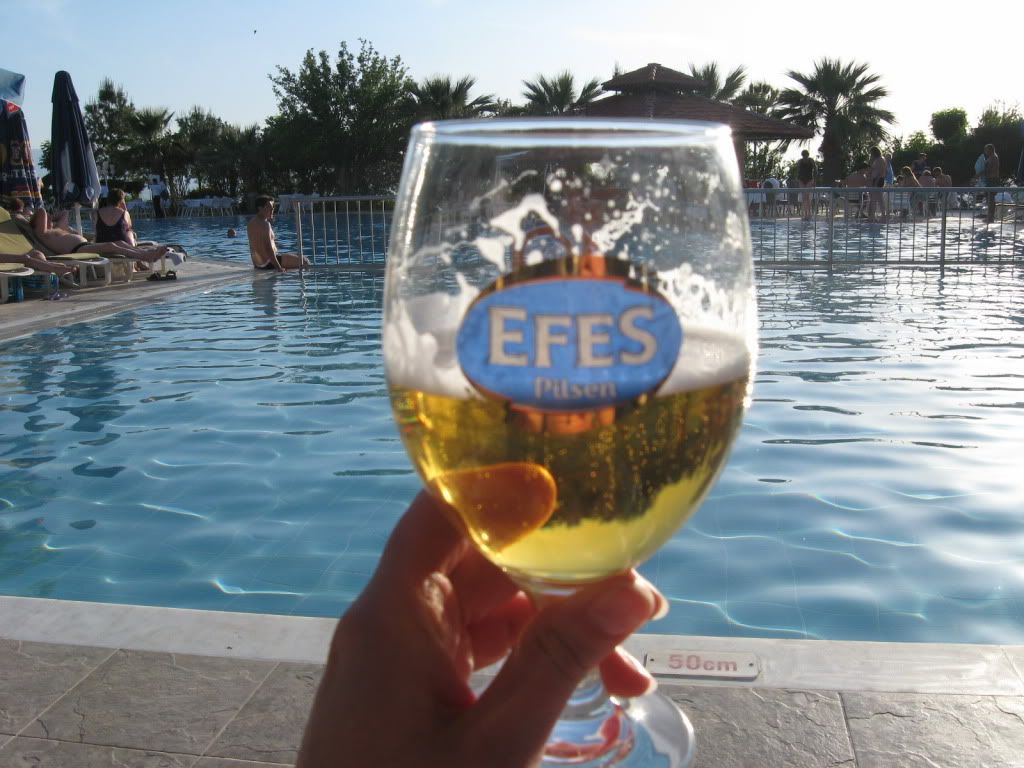
Efes, the Budweiser/Miller of Turkey (i.e. the most ubiquitous all-purpose beer in the country).
There was a very interesting service offered by this spa-in-the-hotel, called "Dr. Fish," wherein you lower your feet into a little tank and allow tiny fish, called garra rufa fish (native to Kangal, Turkey) to eat the dead skin off of your feet, emerging in about 15 or 20 minutes with much softer feet. A bunch of us tried this for the novelty of it. I found it pretty ticklish at first, as you can see from this photo:


A close-up of the fish doing their thing to my feet. Well, now I can say I've done that...and I don't really feel the need to do it again. My feet *did* feel softer when it was over, and it was fun and a very interesting sensation, but totally unnecessary in terms of time and expense. A foot file and soaking works just as well imho. ;) File this one under people-with-too-much-money-will-buy-anything.

At one of our rest stops between Pamukkale and Ephesus, we stopped at a market that had a ton of Turkish delight available to sample. I liked the claim on this box: "Improve sexual." LOL
When we arrived at Ephesus, it was bonkers crowded and the sun was white-hot. Ephesus, like the Cappadoccia region, is one of the big attractions in Turkey, because it was such a large Roman city and it is fairly well-preserved (excavations continue to this day, mainly done by Austrians, interestingly enough; informational signs were in German as well as Turkish and English). According to the tour company I traveled with, St. Paul once arrived at Ephesus and remarked, "Is there a greater city?" Here are some shots of what remains:

This sign would indicate a hospital or doctor (snakes are an ancient symbol of health/medicine).

An image of Nike, the goddess of victory.

I wonder if Ephesus was ever this crowded in its heyday?
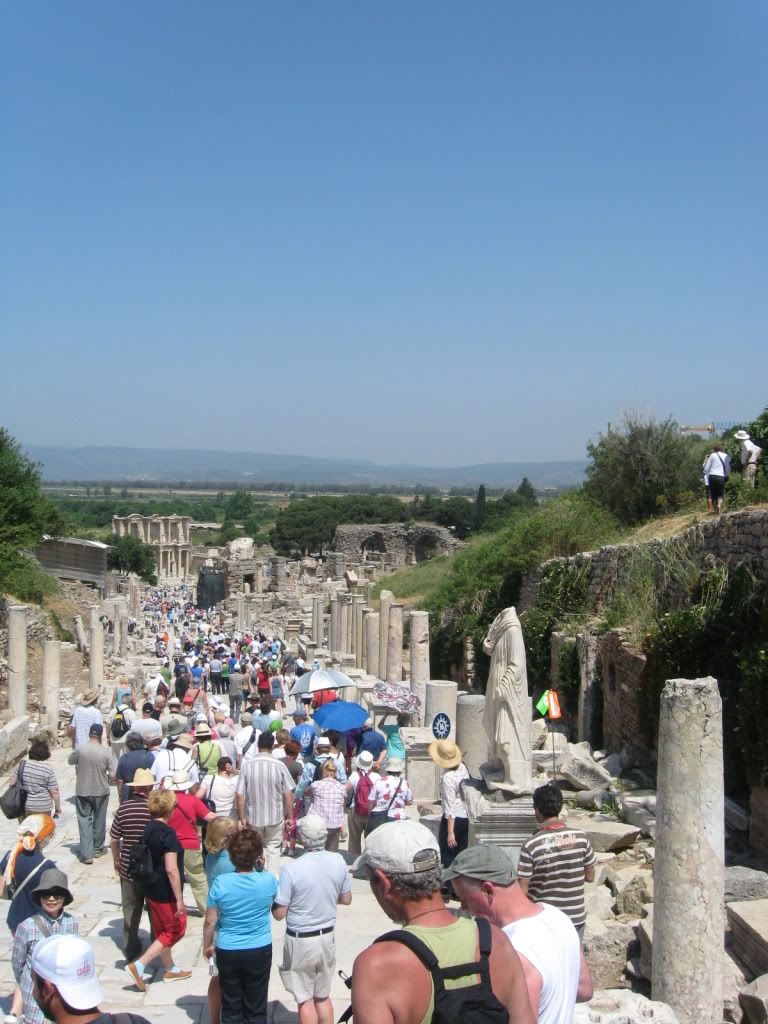

Luckily, the line for the ancient bathroom was just to look at it, not to use it.

The library.

Archways over the street leading to the ampitheatre.

A view of the enormous ampitheatre.

Shot from inside the ampitheatre.

A view of the stage from the seats.

This church, a bit off the beaten path, was eventually named the "Church of Mary" in AD 431, because Mary (mother of Jesus) was thought to have lived the later years of her life near this site.
After Ephesus, we drove a short distance up some wooded hills to a tranquil area where Mary was thought to have lived her last days. The building now known as the home of Mary has been converted to a chapel, and people pin their prayers onto a nearby wall. I remember the whole area here as very peaceful, with beautiful foliage.

This was allegedly a pool where John the Baptist performed baptisms.

The entrance to St. Mary's house, now a small chapel (the pic below is just outside the exit).

More shots of the grounds:




The prayer wall.
After all this, we headed to the Aegean coastal city of Izmir (formerly known as Smyrna, the birthplace of Homer), stopping at a famed leather apparel manufacturer on the way. We enjoyed a fashion show before being allowed to browse the merchandise:


At one point during the fashion show, Jon and I were pulled up to walk the runway ourselves, modeling some leather jackets. There are pictures, but I look like an idiot so I'm not going to show them to you. Later, in the shop, I looked, and I touched, but I did not buy. WAY out of my price range!
Later that night, Jon, Mandra and I walked around downtown Izmir to see what it was about. We ended up stumbling on an outdoor private party in a park; it may have been a wedding reception or something. The gates were locked, but we liked the lit-up sidewalk outside the party grounds:

We ended up walking along the waterfront and stopping at a bar/restaurant that served an "Efes tower."


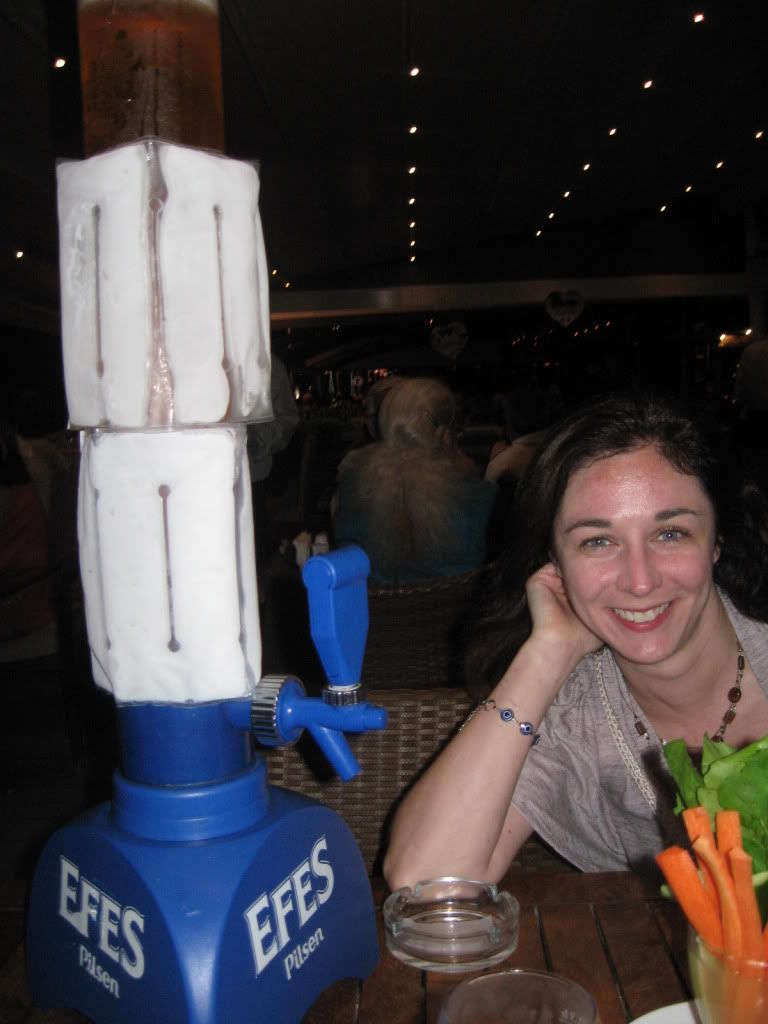
Those are ice packs surrounding our beer tower, in case you were wondering.
Upon leaving Izmir, we toured the store/display room of a dealer in semi-precious stones, like jade and turquoise:


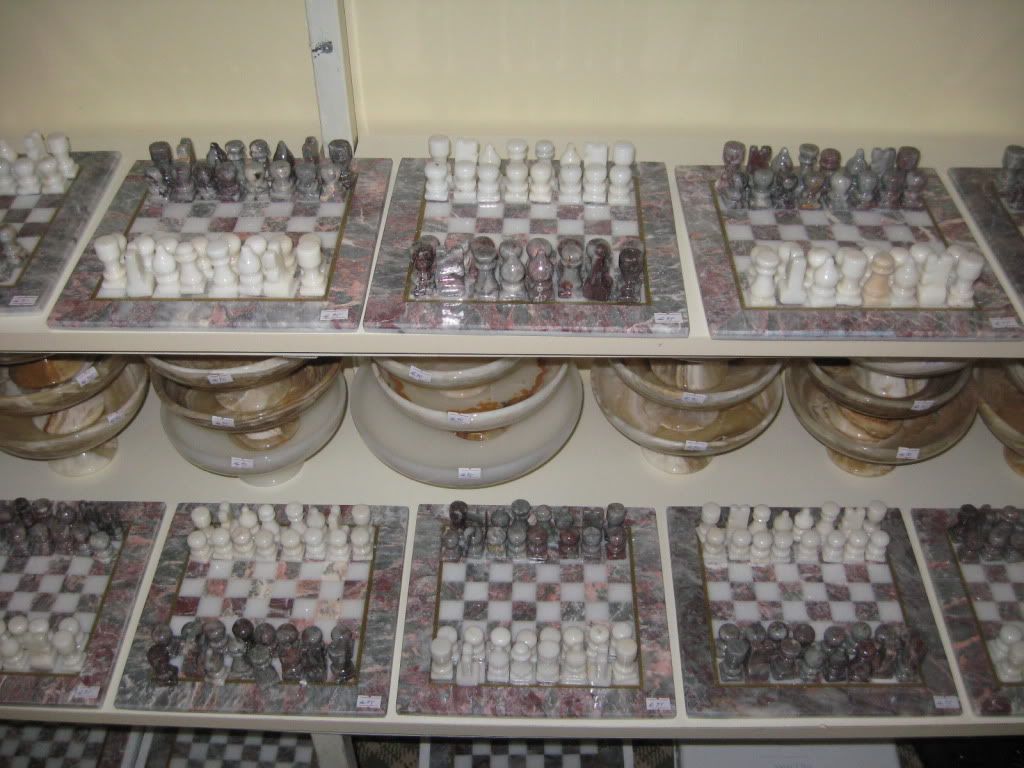
We also visited an interesting site: the ruins of Asclepion, which was apparently a shrine to the Greek god of medicine. Here, people with mental/emotional ailments could enjoy musical therapy in the form of performances at the ampitheatre, and therapy sessions involving inhaling the vapors of opium-infused water and then sleeping and later recounting their dreams with their doctors.

Natural honey stand near the entrance.
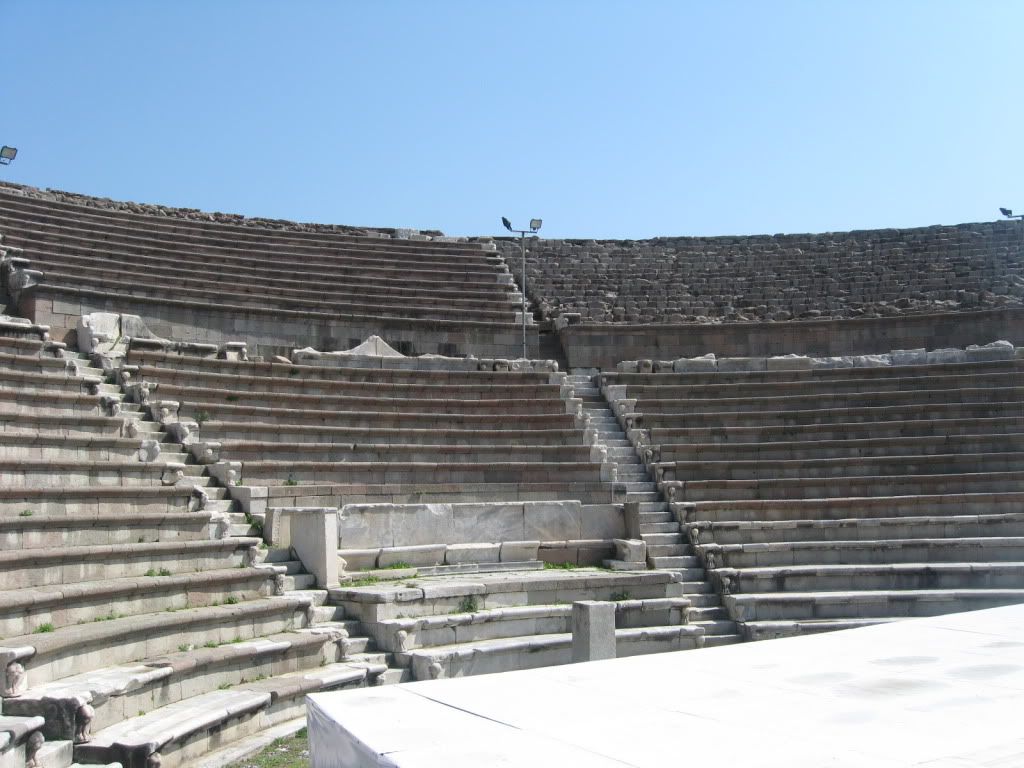


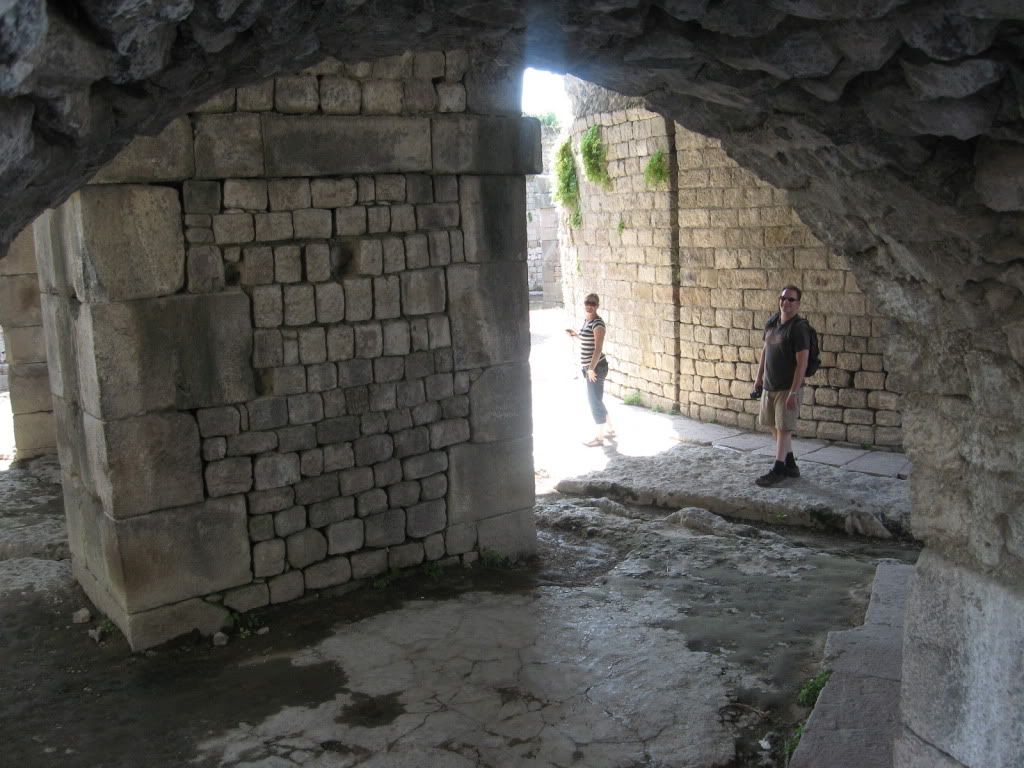


Kermie!
A brief trip to the Pergamum Museum, where we saw a bunch of artifacts, including a bust of Euripedes:
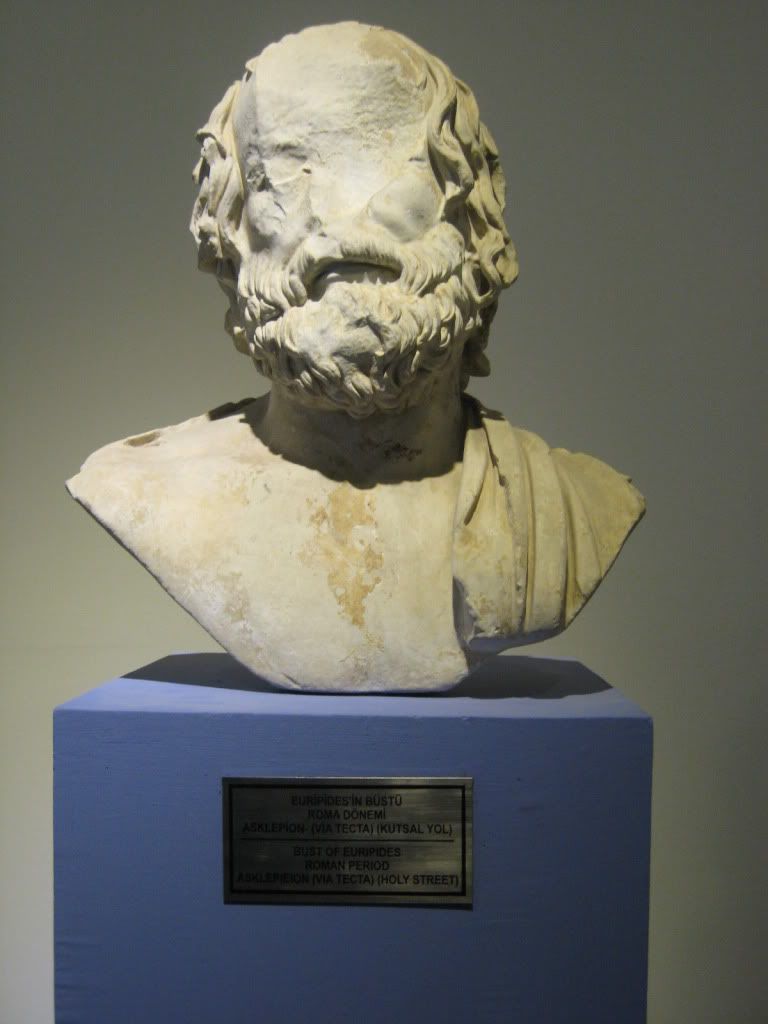



Then it was on to the grown-over ruins of Troy, complete with a replica of the famous wooden Trojan horse:





Yep, you could walk up in it. I'm up there in the second window from the left, :).

The kitteh of Troy.
We stayed that night in Canakkale, where rabbits freely roamed the rustic grounds right near a somewhat rural sandy beach. Here are some shots of the area:







A local family enjoys some time at the beach, which was just down the hill from the hotel.

Dinner that night. Eep!

Sunset in Canakkale.
The next day, on the way back to Istanbul, we visited some historical WWI battlefield sites where many young Turkish, Australian, and New Zealander soldiers lost their lives. The battle of Gallipoli was considered especially tragic, misguided, and disastrous due to the geography of the area and the inexperience of the young Australian and Kiwi soldiers, who suffered heavy casulties. A statement by then-Turkish president Ataturk at the site was especially moving:





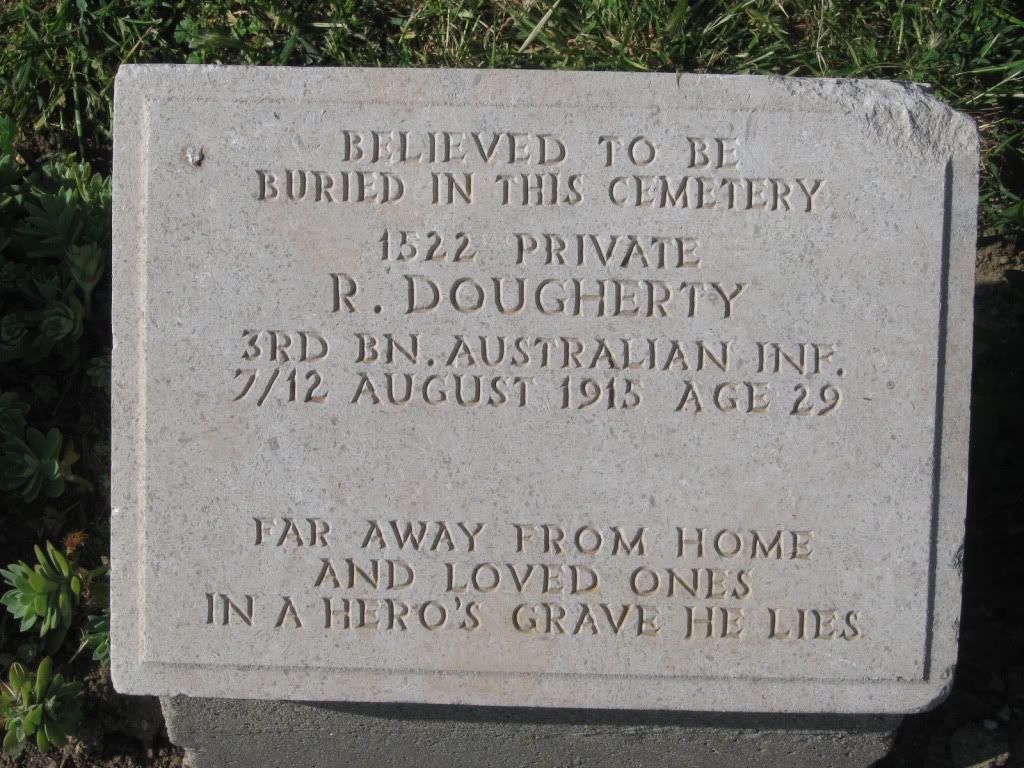
An example of one of the many gravestones in the area.

Back in Istanbul, we took a short cruise along the Bosphorus River.

Matilde and Edison, lookin' pretty fly.

Sippin' my apple tea.




As we drifted along the river, we were told about a ton of the buildings lining the waterfront. I believe this one was a former home of Turkish aristocracy; now it might be a museum.
For our farewell dinner in Istanbul, we trekked to the old town, where narrow streets allow only pedestrians and are lined with restaurants, street musicians, strings of lights, and plenty of enchanted people.

Tom, Dave, Jon, and Mandra.

Lynn and Ken.

Our last feline dining companion.


Well, that concludes my Turkey tripologue. I still feel like I'm leaving out a ton of information about Turkey: my general impressions, the daily call-to-prayers, what the public restrooms were like, some of the Turkish words I learned, etc. I learned a lot about Turkey that gradually became ingrained so that now I take it for granted. If you're curious about anything, just ask! Otherwise, I hope you had a nice reading/viewing experience. Farewell for now, :).

Under the facade of the library at Ephesus (home of Greek philosopher Heraclitus and later the capital of Roman Asia Minor).
Poppies...poppies...

After leaving the lovely-but-expensive resort town of Antalya (and stopping briefly to check out a real poppy field (opium trade, anyone?), we made our way to Pamukkale, which is Turkish for "cotton castle." When you see its landmark attraction, you'll understand why:

This hillside is not covered in ice or snow; in fact, it was crazy hot out that day. This is limestone. In some areas, the limestone formed a series of flat slates that pool with water, which people come to wade and splash around in. Or, if they're young "Russian prostitutes," as Mandra would say, they come in skimpy bathing suits and lay in suggestive poses while their boyfriends take pictures of them, as though they were shooting their own version of the Sports Illustrated swimsuit issue, while people of all ages wait for them to move so they can take pictures of the landscape. LOL
Here are some more shots I managed to get when naked hoochies weren't in the way:






At Pamukkale, you could pay a small fee to take a dip in this pool, which was supposedly a pool (or near a pool) Cleopatra bathed in once-upon-a-time.
Very near Pamukkale (in walking distance; basically at the same stop) were the ruins of Hieropolis, a thermal resort founded in 190 BC and later added-to by the Romans.



It seems even thermal resorts had ampitheatres (at least in Roman times).
Later that afternoon/evening, we enjoyed some relaxation at our hotel, which was also a spa. The hotel grounds were really nice and consisted of several buildings, an outdoor pool, a natural thermal spring, and a restaurant. Here are some shots of the grounds:




Efes, the Budweiser/Miller of Turkey (i.e. the most ubiquitous all-purpose beer in the country).
There was a very interesting service offered by this spa-in-the-hotel, called "Dr. Fish," wherein you lower your feet into a little tank and allow tiny fish, called garra rufa fish (native to Kangal, Turkey) to eat the dead skin off of your feet, emerging in about 15 or 20 minutes with much softer feet. A bunch of us tried this for the novelty of it. I found it pretty ticklish at first, as you can see from this photo:


A close-up of the fish doing their thing to my feet. Well, now I can say I've done that...and I don't really feel the need to do it again. My feet *did* feel softer when it was over, and it was fun and a very interesting sensation, but totally unnecessary in terms of time and expense. A foot file and soaking works just as well imho. ;) File this one under people-with-too-much-money-will-buy-anything.

At one of our rest stops between Pamukkale and Ephesus, we stopped at a market that had a ton of Turkish delight available to sample. I liked the claim on this box: "Improve sexual." LOL
When we arrived at Ephesus, it was bonkers crowded and the sun was white-hot. Ephesus, like the Cappadoccia region, is one of the big attractions in Turkey, because it was such a large Roman city and it is fairly well-preserved (excavations continue to this day, mainly done by Austrians, interestingly enough; informational signs were in German as well as Turkish and English). According to the tour company I traveled with, St. Paul once arrived at Ephesus and remarked, "Is there a greater city?" Here are some shots of what remains:

This sign would indicate a hospital or doctor (snakes are an ancient symbol of health/medicine).

An image of Nike, the goddess of victory.

I wonder if Ephesus was ever this crowded in its heyday?


Luckily, the line for the ancient bathroom was just to look at it, not to use it.

The library.

Archways over the street leading to the ampitheatre.

A view of the enormous ampitheatre.

Shot from inside the ampitheatre.

A view of the stage from the seats.

This church, a bit off the beaten path, was eventually named the "Church of Mary" in AD 431, because Mary (mother of Jesus) was thought to have lived the later years of her life near this site.
After Ephesus, we drove a short distance up some wooded hills to a tranquil area where Mary was thought to have lived her last days. The building now known as the home of Mary has been converted to a chapel, and people pin their prayers onto a nearby wall. I remember the whole area here as very peaceful, with beautiful foliage.

This was allegedly a pool where John the Baptist performed baptisms.

The entrance to St. Mary's house, now a small chapel (the pic below is just outside the exit).

More shots of the grounds:




The prayer wall.
After all this, we headed to the Aegean coastal city of Izmir (formerly known as Smyrna, the birthplace of Homer), stopping at a famed leather apparel manufacturer on the way. We enjoyed a fashion show before being allowed to browse the merchandise:


At one point during the fashion show, Jon and I were pulled up to walk the runway ourselves, modeling some leather jackets. There are pictures, but I look like an idiot so I'm not going to show them to you. Later, in the shop, I looked, and I touched, but I did not buy. WAY out of my price range!
Later that night, Jon, Mandra and I walked around downtown Izmir to see what it was about. We ended up stumbling on an outdoor private party in a park; it may have been a wedding reception or something. The gates were locked, but we liked the lit-up sidewalk outside the party grounds:

We ended up walking along the waterfront and stopping at a bar/restaurant that served an "Efes tower."



Those are ice packs surrounding our beer tower, in case you were wondering.
Upon leaving Izmir, we toured the store/display room of a dealer in semi-precious stones, like jade and turquoise:



We also visited an interesting site: the ruins of Asclepion, which was apparently a shrine to the Greek god of medicine. Here, people with mental/emotional ailments could enjoy musical therapy in the form of performances at the ampitheatre, and therapy sessions involving inhaling the vapors of opium-infused water and then sleeping and later recounting their dreams with their doctors.

Natural honey stand near the entrance.






Kermie!
A brief trip to the Pergamum Museum, where we saw a bunch of artifacts, including a bust of Euripedes:




Then it was on to the grown-over ruins of Troy, complete with a replica of the famous wooden Trojan horse:





Yep, you could walk up in it. I'm up there in the second window from the left, :).

The kitteh of Troy.
We stayed that night in Canakkale, where rabbits freely roamed the rustic grounds right near a somewhat rural sandy beach. Here are some shots of the area:







A local family enjoys some time at the beach, which was just down the hill from the hotel.

Dinner that night. Eep!

Sunset in Canakkale.
The next day, on the way back to Istanbul, we visited some historical WWI battlefield sites where many young Turkish, Australian, and New Zealander soldiers lost their lives. The battle of Gallipoli was considered especially tragic, misguided, and disastrous due to the geography of the area and the inexperience of the young Australian and Kiwi soldiers, who suffered heavy casulties. A statement by then-Turkish president Ataturk at the site was especially moving:






An example of one of the many gravestones in the area.

Back in Istanbul, we took a short cruise along the Bosphorus River.

Matilde and Edison, lookin' pretty fly.

Sippin' my apple tea.




As we drifted along the river, we were told about a ton of the buildings lining the waterfront. I believe this one was a former home of Turkish aristocracy; now it might be a museum.
For our farewell dinner in Istanbul, we trekked to the old town, where narrow streets allow only pedestrians and are lined with restaurants, street musicians, strings of lights, and plenty of enchanted people.

Tom, Dave, Jon, and Mandra.

Lynn and Ken.

Our last feline dining companion.


Well, that concludes my Turkey tripologue. I still feel like I'm leaving out a ton of information about Turkey: my general impressions, the daily call-to-prayers, what the public restrooms were like, some of the Turkish words I learned, etc. I learned a lot about Turkey that gradually became ingrained so that now I take it for granted. If you're curious about anything, just ask! Otherwise, I hope you had a nice reading/viewing experience. Farewell for now, :).